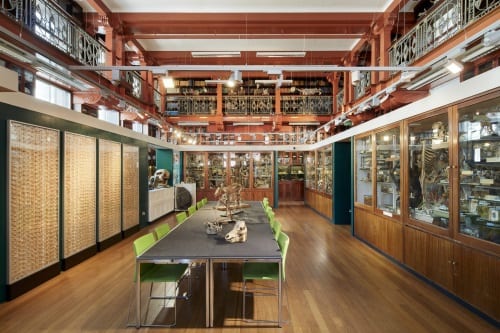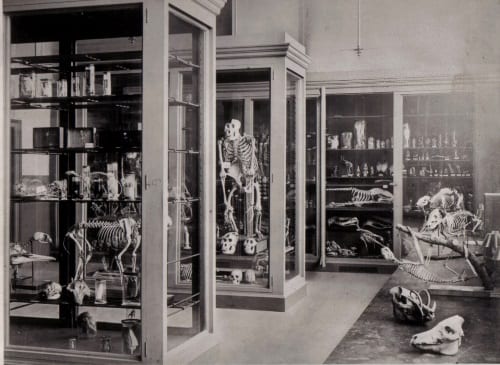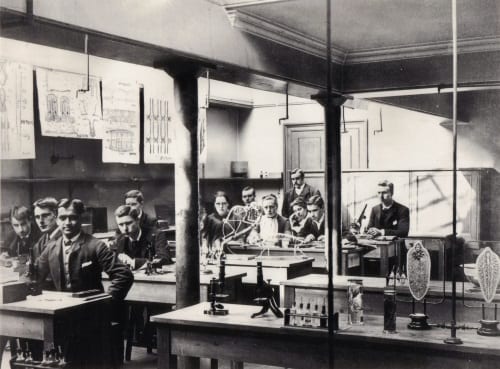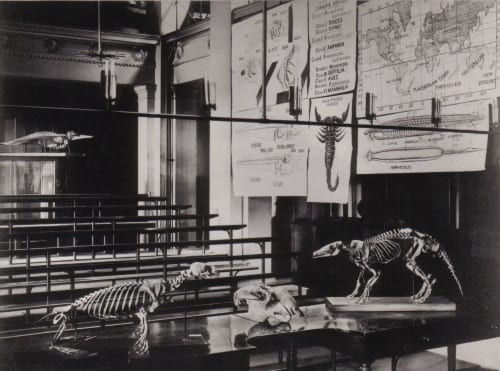Teaching in the Grant Museum
By Tannis Davidson, on 15 October 2018
At UCL, Term 1 is now fully underway – ID cards have been issued, classrooms have been located and routines have been established. Object-based teaching has also begun at the Grant Museum where students from UCL and throughout the London area will have the opportunity to use museum specimens in their practicals.
During a typical academic year, around 2500 university students use the Grant Museum collection as part of their formal coursework on a wide range of courses including zoology, palaeontology, the history of art, geography, museum studies, communication and even dance. The Museum and its collection is also used by students for project work and postgraduate research or as a testing ground for museum engagement, new technologies and visitor research.
The Grant Museum invites use of its collection for teaching to any faculty at UCL. We’re pretty good at what we do (if we do say so ourselves), because we’ve had 190 years of practice…
The Grant Museum of Zoology and Comparative Anatomy was founded as a teaching collection in 1827 by Robert E. Grant at the newly established London University (renamed UCL in 1836). Grant was born in Edinburgh and studied medicine but gave up medical practice in favour of studying marine biology and the zoology of vertebrates. He was an early exponent of theories of evolution and greatly influenced the young Charles Darwin while Darwin was a student in Edinburgh.
Grant was the first Professor of Zoology and Comparative Anatomy in England and upon arrival in London, found no specimens or materials with which to teach his classes. He thus began to acquire specimens which form the basis of the Museum’s collection.
Over the course of its history, the Grant Museum scientists and curators have added to the collection to facilitate teaching as well as individual areas of research including E. Ray Lankester (horsehoe crabs), D.M.S. Watson (fossil fish) and J.P. Hill (embryological specimens).
Lankester was an advocate of object-based learning who encouraged his students to use specimens as teaching aids. Throughout his time as curator of the Grant Museum and Chair of Zoology at UCL (1875-1890), he continuously added to the collections including acquiring specimens from research centres such as the Stazione Zoologica in Naples and teaching models such as the Blaschka glass models of invertebrates and wax embryological models for use in his teaching practicals. The Museum is fortunate to have a few images from the Lankester years which give a glimpse of teaching use of the collection over 150 years ago:
Nearly all of the specimens pictured in the historical images from the 1880’s can be identified in the collection today and are still actively used in teaching.
In addition to formal university teaching, the Grant Museum runs informal learning events throughout the year including special exhibitions, lifelong learning and family activities. Exhibitions and events are based on the cutting-edge research that goes on at UCL, giving the chance for local communities to engage with new knowledge and the people that work here.
Tannis Davidson is the Curator of the Grant Museum of Zoology
 Close
Close





